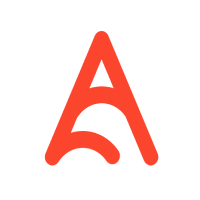-
 Bitcoin
Bitcoin $84,051.1767
-0.66% -
 Ethereum
Ethereum $1,610.2058
-1.11% -
 Tether USDt
Tether USDt $1.0000
0.03% -
 XRP
XRP $2.1239
-1.01% -
 BNB
BNB $582.4857
-0.63% -
 Solana
Solana $128.2753
-1.22% -
 USDC
USDC $0.9999
0.01% -
 TRON
TRON $0.2511
-0.27% -
 Dogecoin
Dogecoin $0.1556
-1.95% -
 Cardano
Cardano $0.6206
-2.15% -
 UNUS SED LEO
UNUS SED LEO $9.3675
-0.08% -
 Chainlink
Chainlink $12.4182
-2.63% -
 Avalanche
Avalanche $19.3993
-3.96% -
 Stellar
Stellar $0.2398
0.69% -
 Toncoin
Toncoin $2.9500
3.61% -
 Shiba Inu
Shiba Inu $0.0...01182
-1.42% -
 Sui
Sui $2.1274
-2.89% -
 Hedera
Hedera $0.1595
-3.86% -
 Bitcoin Cash
Bitcoin Cash $323.0041
-0.34% -
 Litecoin
Litecoin $75.7465
-1.58% -
 Polkadot
Polkadot $3.5878
-3.38% -
 Dai
Dai $1.0001
0.02% -
 Bitget Token
Bitget Token $4.2823
0.13% -
 Hyperliquid
Hyperliquid $15.3042
-1.99% -
 Ethena USDe
Ethena USDe $0.9992
0.03% -
 Pi
Pi $0.6653
-9.93% -
 Monero
Monero $214.4529
-0.63% -
 Uniswap
Uniswap $5.2568
-2.44% -
 OKB
OKB $51.0246
-3.49% -
 Pepe
Pepe $0.0...06993
-4.63%
What is PoW (Proof of Work)? How do miners mine?
PoW is a consensus mechanism used by cryptocurrencies like Bitcoin, where miners solve complex puzzles to validate transactions and add them to the blockchain.
Apr 12, 2025 at 12:08 am
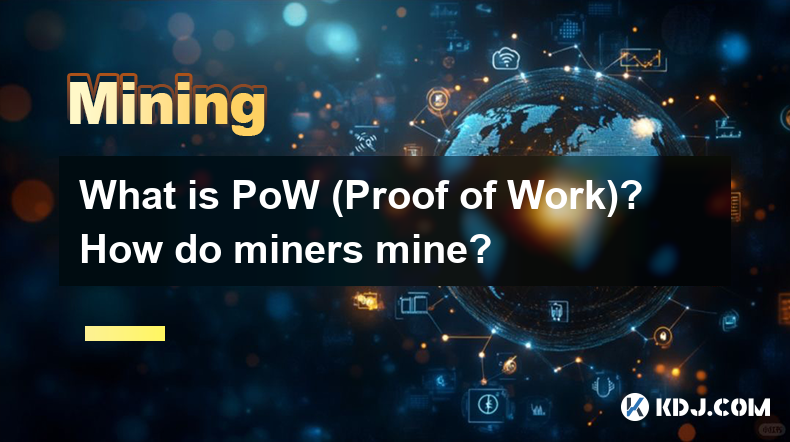
What is PoW (Proof of Work)?
Proof of Work (PoW) is a consensus mechanism used by several cryptocurrencies, most notably Bitcoin, to validate transactions and add them to the blockchain. This mechanism requires participants, known as miners, to solve complex mathematical problems to earn the right to add a new block of transactions to the blockchain. The primary goal of PoW is to ensure the security and integrity of the blockchain by making it computationally difficult and costly to tamper with the transaction history.
How Does Proof of Work Work?
In a PoW system, miners compete to solve a cryptographic puzzle. The puzzle involves finding a hash that meets a specific criteria set by the network, often referred to as the target hash. The target hash is adjusted periodically to maintain a consistent block time, ensuring the network's stability.
- Miners collect a set of unconfirmed transactions from the network's mempool and bundle them into a block.
- They then attempt to find a hash of this block that is below the target hash set by the network.
- This process involves repeatedly changing a value in the block header, known as the nonce, and hashing the block until a hash that meets the criteria is found.
- Once a miner finds a valid hash, they broadcast the new block to the network.
- Other nodes on the network verify the block's validity, and if it is valid, they add it to their copy of the blockchain.
The first miner to solve the puzzle and add a valid block to the blockchain is rewarded with newly minted cryptocurrency and transaction fees from the transactions included in the block.
The Role of Miners in PoW
Miners are crucial to the operation of a PoW-based blockchain. They invest in specialized hardware, known as ASICs (Application-Specific Integrated Circuits), to perform the necessary computations efficiently. Miners also contribute to the security of the network by ensuring that only valid transactions are added to the blockchain.
- Mining hardware: Miners use ASICs because they are designed specifically for the SHA-256 hashing algorithm used in Bitcoin mining, offering significantly higher performance than general-purpose CPUs or GPUs.
- Mining pools: Many miners join mining pools to combine their computational power and share the rewards. This increases their chances of solving the puzzle and earning rewards more consistently.
- Energy consumption: Mining is an energy-intensive process, as the hardware requires significant power to perform the necessary computations. This has led to discussions about the environmental impact of PoW-based cryptocurrencies.
How Do Miners Mine?
Mining involves several steps that miners must follow to participate in the PoW process. Here is a detailed look at how miners mine:
- Set up mining hardware: Miners need to acquire and set up ASICs or other suitable hardware for mining. This involves connecting the hardware to a power supply and ensuring it has proper cooling to prevent overheating.
- Join a mining pool: Most miners join a mining pool to increase their chances of earning rewards. They need to register with a pool and set up their mining software to connect to the pool's server.
- Configure mining software: Miners use specialized software to manage their mining operations. This software communicates with the mining pool and controls the ASICs. Miners need to configure the software with the pool's details and their wallet address to receive rewards.
- Start mining: Once everything is set up, miners can start the mining process. The software will begin solving the cryptographic puzzles, and the ASICs will perform the necessary computations.
- Monitor performance: Miners need to monitor their hardware's performance and the pool's status to ensure everything is running smoothly. They may need to adjust settings or troubleshoot issues as they arise.
The Economics of Mining
The economics of mining are driven by several factors, including the block reward, transaction fees, and mining difficulty. Miners must consider these factors when deciding whether to mine and how much to invest in hardware and electricity.
- Block reward: The block reward is the amount of new cryptocurrency minted and awarded to the miner who successfully adds a new block to the blockchain. For Bitcoin, this reward halves approximately every four years, a process known as halving.
- Transaction fees: In addition to the block reward, miners also earn transaction fees from the transactions included in the block. These fees are paid by users to prioritize their transactions and can become a significant source of revenue as the block reward decreases.
- Mining difficulty: The mining difficulty is adjusted periodically to maintain a consistent block time. As more miners join the network and the total computational power increases, the difficulty increases, making it harder to solve the puzzle and earn rewards.
Challenges and Considerations
Mining in a PoW system comes with several challenges and considerations that miners must be aware of:
- High energy costs: The energy consumption required for mining can be substantial, leading to high operational costs. Miners need to consider the cost of electricity and the environmental impact of their operations.
- Hardware costs: The cost of acquiring and maintaining mining hardware can be significant. Miners need to stay updated with the latest technology to remain competitive.
- Regulatory risks: Miners must be aware of the regulatory environment in their jurisdiction, as some countries have imposed restrictions or bans on cryptocurrency mining.
- Network security: While PoW provides strong security for the blockchain, it is not immune to attacks. Miners need to be vigilant and participate in the network's governance to maintain its integrity.
Frequently Asked Questions
Q: How does the mining difficulty affect the profitability of mining?
A: The mining difficulty directly impacts the profitability of mining. As the difficulty increases, it becomes harder to solve the cryptographic puzzle, requiring more computational power and energy. This can reduce the profitability of mining unless the price of the cryptocurrency increases or transaction fees rise significantly.
Q: Can I mine cryptocurrencies using a regular computer?
A: While it is technically possible to mine cryptocurrencies using a regular computer, it is not practical for most PoW-based cryptocurrencies like Bitcoin. The computational power required to compete with ASICs is far beyond what a regular computer can provide, making it unprofitable.
Q: What happens if two miners solve the puzzle at the same time?
A: In the event that two miners solve the puzzle and broadcast their blocks simultaneously, a temporary fork in the blockchain can occur. The network resolves this by accepting the first block that the majority of nodes agree on, and the other block is discarded. The transactions in the discarded block are returned to the mempool and included in future blocks.
Q: How do mining pools distribute rewards among their members?
A: Mining pools typically use a reward distribution system based on the amount of computational power each member contributes. Common methods include Pay Per Share (PPS), where miners receive a fixed amount for each share they contribute, and Proportional, where rewards are distributed proportionally to the number of shares contributed by each miner.
Disclaimer:info@kdj.com
The information provided is not trading advice. kdj.com does not assume any responsibility for any investments made based on the information provided in this article. Cryptocurrencies are highly volatile and it is highly recommended that you invest with caution after thorough research!
If you believe that the content used on this website infringes your copyright, please contact us immediately (info@kdj.com) and we will delete it promptly.
- Ethena Labs Relocates Operations to BVI Amid Regulatory Scrutiny
- 2025-04-16 05:05:13
- Dogecoin (DOGE) Revisiting Critical Higher Timeframe Support Zone
- 2025-04-16 05:05:13
- Ethena Labs Officially Closes Its German Branch and EU Operations
- 2025-04-16 05:00:12
- Bitcoin (BTC) May Have Printed a Local Top near $86,500
- 2025-04-16 05:00:12
- XMR Price Prediction: Will Monero (XMR) Break Out From Its Quiet Uptrend?
- 2025-04-16 04:55:16
- The meme coin market is full of surprises, as new trends emerge with every passing day, and the past few days have not disappointed
- 2025-04-16 04:55:16
Related knowledge
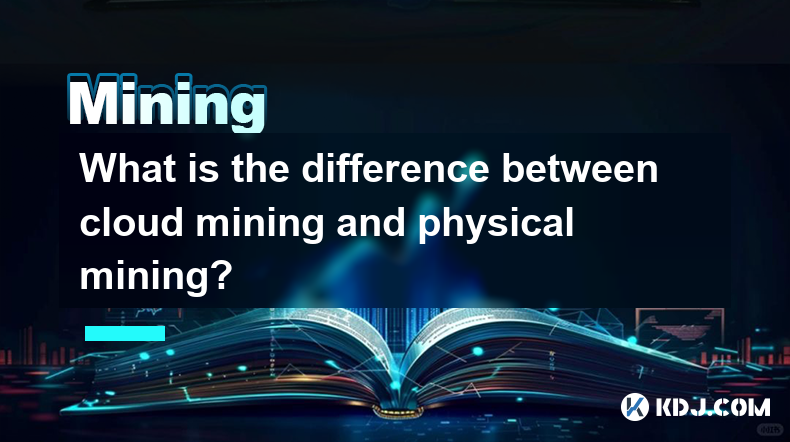
What is the difference between cloud mining and physical mining?
Apr 16,2025 at 01:49am
What is the difference between cloud mining and physical mining? In the world of cryptocurrencies, mining is the process by which new coins are generated and transactions are verified and added to the blockchain. There are two primary methods of mining: cloud mining and physical mining. Understanding the differences between these two approaches can help...
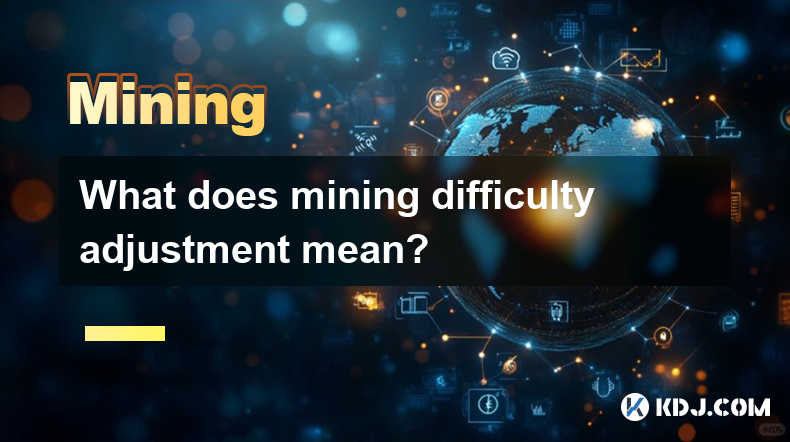
What does mining difficulty adjustment mean?
Apr 16,2025 at 12:42am
What does mining difficulty adjustment mean? Mining difficulty adjustment is a crucial mechanism in blockchain networks, particularly in Proof of Work (PoW) systems like Bitcoin. It ensures that the rate at which new blocks are added to the blockchain remains consistent, despite fluctuations in the total computational power (hash rate) of the network. T...
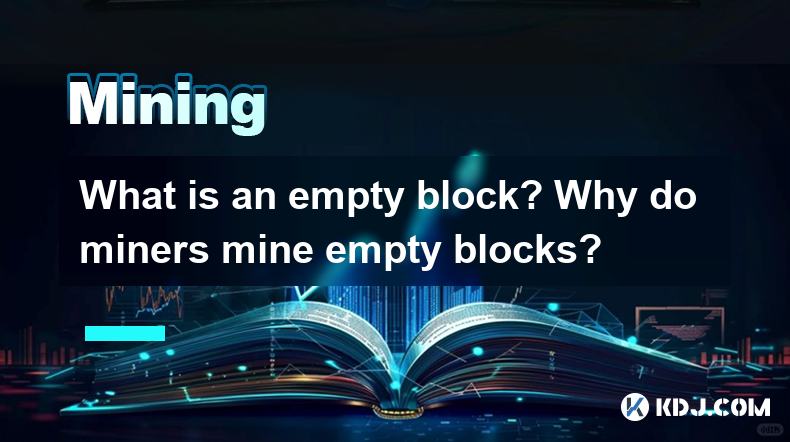
What is an empty block? Why do miners mine empty blocks?
Apr 16,2025 at 01:28am
What is an Empty Block?An empty block in the context of blockchain technology, particularly in cryptocurrencies like Bitcoin, refers to a block that contains no transactions other than the coinbase transaction. The coinbase transaction is a special transaction in which new bitcoins are generated and awarded to the miner who successfully mines the block....
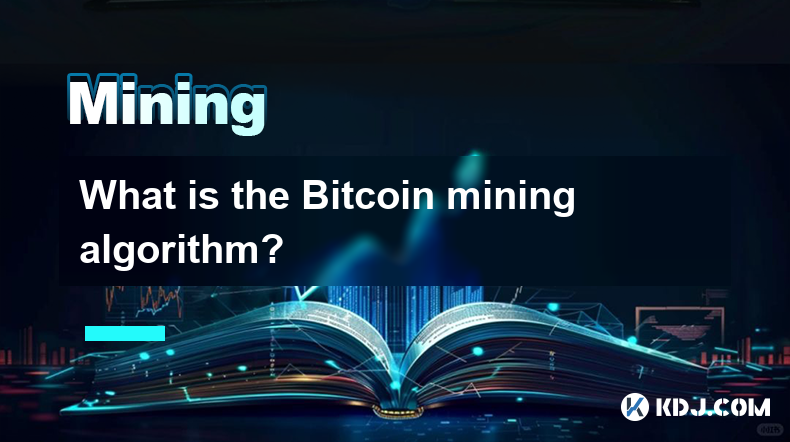
What is the Bitcoin mining algorithm?
Apr 15,2025 at 08:00pm
What is the Bitcoin Mining Algorithm? Bitcoin mining is a crucial process that maintains the integrity and security of the Bitcoin network. At the heart of this process lies the Bitcoin mining algorithm, which is responsible for verifying transactions and adding them to the blockchain. Understanding this algorithm is essential for anyone interested in t...

How to optimize the parameters of the mining software?
Apr 15,2025 at 10:43pm
Optimizing the parameters of mining software is crucial for maximizing efficiency and profitability in cryptocurrency mining. The process involves fine-tuning various settings to ensure that your mining operations run smoothly and effectively. In this article, we will explore the steps and considerations involved in optimizing the parameters of your min...
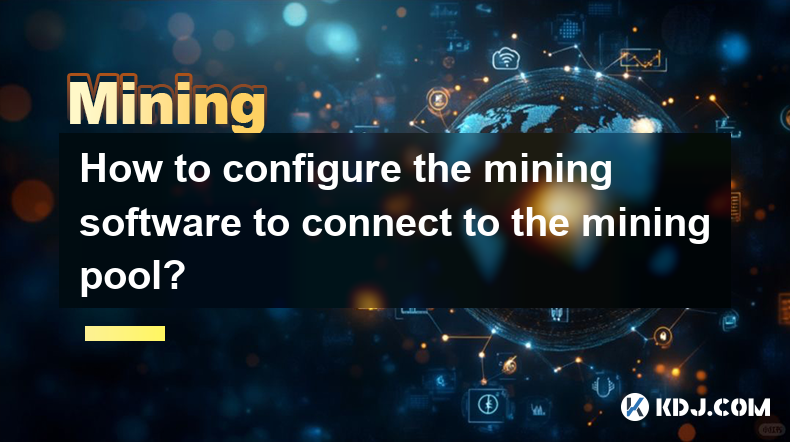
How to configure the mining software to connect to the mining pool?
Apr 16,2025 at 12:07am
Configuring mining software to connect to a mining pool is a crucial step for anyone looking to participate in cryptocurrency mining. This process involves setting up your mining software to communicate with a mining pool server, which then coordinates the mining efforts of multiple miners to increase the chances of solving cryptographic puzzles and ear...

What is the difference between cloud mining and physical mining?
Apr 16,2025 at 01:49am
What is the difference between cloud mining and physical mining? In the world of cryptocurrencies, mining is the process by which new coins are generated and transactions are verified and added to the blockchain. There are two primary methods of mining: cloud mining and physical mining. Understanding the differences between these two approaches can help...

What does mining difficulty adjustment mean?
Apr 16,2025 at 12:42am
What does mining difficulty adjustment mean? Mining difficulty adjustment is a crucial mechanism in blockchain networks, particularly in Proof of Work (PoW) systems like Bitcoin. It ensures that the rate at which new blocks are added to the blockchain remains consistent, despite fluctuations in the total computational power (hash rate) of the network. T...

What is an empty block? Why do miners mine empty blocks?
Apr 16,2025 at 01:28am
What is an Empty Block?An empty block in the context of blockchain technology, particularly in cryptocurrencies like Bitcoin, refers to a block that contains no transactions other than the coinbase transaction. The coinbase transaction is a special transaction in which new bitcoins are generated and awarded to the miner who successfully mines the block....

What is the Bitcoin mining algorithm?
Apr 15,2025 at 08:00pm
What is the Bitcoin Mining Algorithm? Bitcoin mining is a crucial process that maintains the integrity and security of the Bitcoin network. At the heart of this process lies the Bitcoin mining algorithm, which is responsible for verifying transactions and adding them to the blockchain. Understanding this algorithm is essential for anyone interested in t...

How to optimize the parameters of the mining software?
Apr 15,2025 at 10:43pm
Optimizing the parameters of mining software is crucial for maximizing efficiency and profitability in cryptocurrency mining. The process involves fine-tuning various settings to ensure that your mining operations run smoothly and effectively. In this article, we will explore the steps and considerations involved in optimizing the parameters of your min...

How to configure the mining software to connect to the mining pool?
Apr 16,2025 at 12:07am
Configuring mining software to connect to a mining pool is a crucial step for anyone looking to participate in cryptocurrency mining. This process involves setting up your mining software to communicate with a mining pool server, which then coordinates the mining efforts of multiple miners to increase the chances of solving cryptographic puzzles and ear...
See all articles



















































































